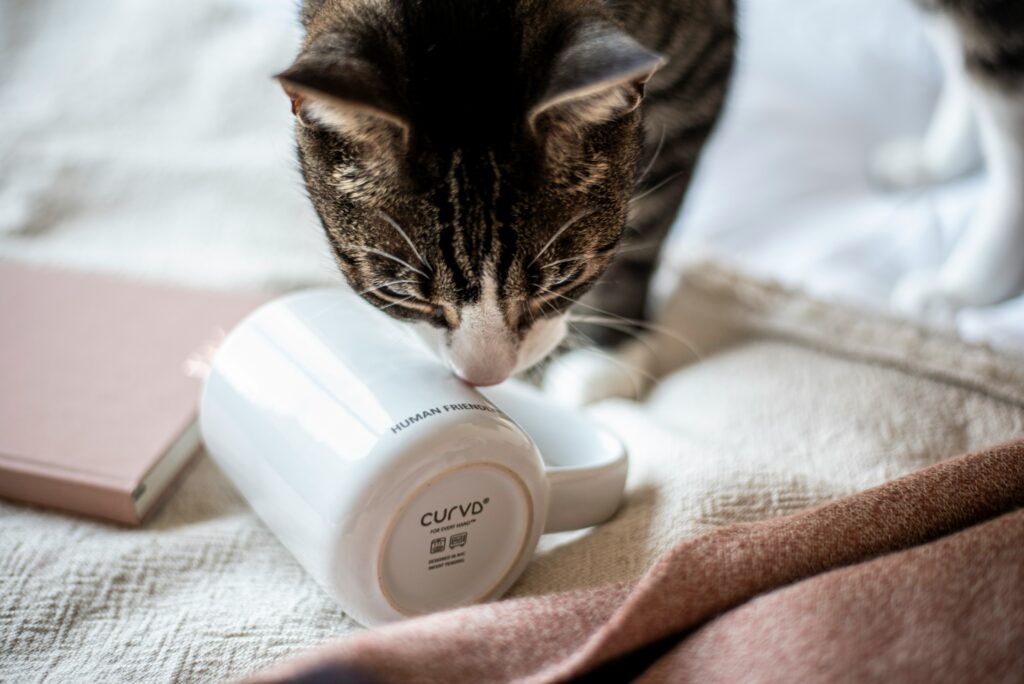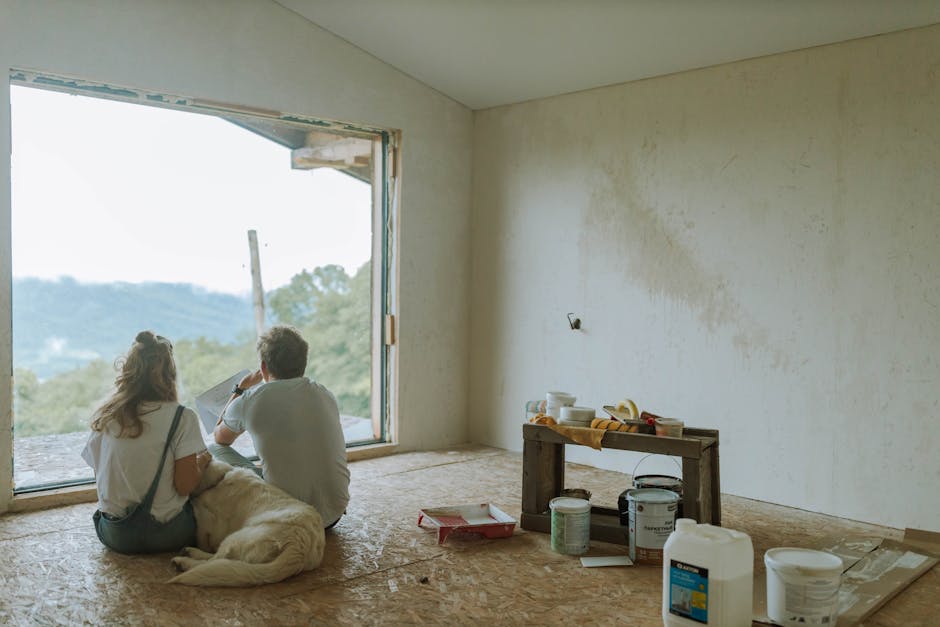Why a Pet-Friendly Home Matters
If you’re sharing your space with a pet, your home isn’t just yours—it’s theirs too. They eat there, sleep there, play there, and often wait all day just to be near you. So building a space that meets their needs isn’t fluffy—it’s practical.
A pet-friendly home balances safety, comfort, and sanity for everyone under the roof. That means designing with sharp claws, curious noses, and unexpected messes in mind. But it also means creating zones for rest, movement, and stimulation—basic needs that help pets stay healthy, both mentally and physically.
For owners, the payoff is peace of mind. When the environment is safe and functional, you can stop reacting to problems and start enjoying your shared space. A little planning upfront goes a long way. You’re not just investing in fewer vet visits or less cleanup. You’re shaping a space that respects the bond between you and your animal. That’s what makes a house feel like home—for them and for you.
Step 1: Safe Zones & Pet-Proofing Basics
Start by giving your pet a place to breathe. A quiet hideout—a corner of the living room, a covered crate, or a cozy bed in the least trafficked room—can make a world of difference. This isn’t about luxury; it’s about giving them somewhere to decompress when the house gets loud or busy.
Next, look for danger zones hiding in plain sight. Exposed cords? Wrap or mount them out of reach. Toxic plants like lilies or philodendrons? Rehome them or raise them high. Chemical cleaners under the sink? Lock them up or switch to pet-safe versions. Dogs and cats are curious by nature—your job is to stay one step ahead.
Windows and balconies are risk points too. All screens should be tight and secure. Balconies need pet-proof barriers, especially for cats prone to rooftop adventures. Even staircases can be a hazard if you’ve got smaller pets or seniors—baby gates work just as well for four-legged roommates.
Finally, think beyond safety: create a space just for them. A basket of toys, a window perch, or a soft pad in a sun beam—these aren’t just nice touches; they send a clear signal to your pet: you belong here. And when pets feel secure, they act secure.
Pet-proofing isn’t about wrapping your home in bubble wrap. It’s about smart tweaking so that your space works for every member of the household—fur and all.
Step 2: Flooring and Furniture Choices
Living with pets doesn’t mean giving up on good design—but it does require smarter choices. Start with materials built to last. Scratch-resistant flooring like luxury vinyl, sealed concrete, or dense hardwoods can handle claws without scarring every square foot. Go for finishes that are low-gloss to help hide marks.
Furniture should fight back, not fold. Look for couches with tight-weave or performance fabrics like microfiber, canvas, or synthetic blends that resist tearing and are a breeze to spot clean. Leather can work too—just opt for top-grain or faux types that don’t shred at the first sign of a stretch.
Rugs are often casualties in pet-heavy homes, but they don’t have to be. Choose low-pile options that are washable and stain-resistant. Think polypropylene or indoor-outdoor rugs that shrug off messes and don’t trap hair.
Finally, don’t trade function for flavor. Plenty of modern furniture lines now prioritize both durability and design. So yes—pet-friendly can still mean stylish.
Step 4: Air Quality and Allergy Considerations
Creating a home that’s comfortable for both you and your pet involves more than pet-proofing furniture or setting up play areas—it also means addressing the air you breathe and the materials around you. If you or your pet suffer from allergies, these steps can significantly improve daily life.
Improve Air Circulation and Reduce Airborne Irritants
Good ventilation is the first defense against excess dander, fur, and dust accumulation.
- Open windows regularly to let in fresh air (weather and outdoor conditions permitting)
- Use exhaust fans in areas prone to humidity or odor, like laundry rooms or litter areas
- Keep vents and filters clean, especially in HVAC systems
Invest in HEPA Filters and Pet-Safe Cleaning Products
Air purifiers equipped with HEPA filters can trap fine particles like pet dander and dust mites.
- Place HEPA air purifiers in frequently occupied areas, such as bedrooms and living rooms
- Opt for vacuum cleaners fitted with HEPA filters to reduce buildup from floors and furniture
- Choose pet-safe cleaners without harsh chemicals to prevent respiratory irritation for both humans and animals
Select Allergy-Resistant Fabrics and Finishes
What’s underfoot (and under-paw) matters too. The right materials can help reduce the number of allergens trapped in your home.
- Avoid heavy drapes and carpets that hold pet hair and dust
- Choose tightly woven upholstery fabrics like leather or microfiber
- Use washable slipcovers, throw blankets, and rugs for easy cleaning
Additional Resource for Allergy Management
Still struggling with allergies even after cleaning and filtering your air? You may need a multi-layered approach.
Struggling with allergies? Learn more about Managing Pet Allergies – Tips for Both Pets and Owners
Step 4: Feeding and Watering Safely
Keeping your pet’s food and water areas clean, safe, and easily accessible is essential for their health. Simple adjustments can prevent contamination, reduce mess, and create a more comfortable routine for you and your pet.
Smart Food Storage Practices
Improper storage can lead to spills, bug infestations, and even spoiled food. Use the same care you would for your own pantry.
- Store dry food in airtight, labeled containers
- Keep treats sealed and out of reach
- Avoid leaving open bags of kibble or treats on the floor or counter
- Clean food storage bins regularly to prevent buildup or mold
Choosing the Right Bowls
Not all pet bowls are created equal. The wrong type can lead to spills, injuries, or even health issues.
- Opt for non-toxic materials like stainless steel, ceramic, or BPA-free plastic
- Use non-slip bottoms to prevent sliding during mealtimes
- Avoid narrow or top-heavy bowls that can tip easily
- Consider elevated dishes for larger pets or those with joint issues
Optimal Placement: Clean, Calm, and Consistent
Where you place your pet’s feeding station can impact their digestion and comfort.
- Keep water and food bowls in a low-traffic area to minimize stress and disturbance
- Ensure the space is well-ventilated and away from litter boxes or strong odors
- Use a washable mat underneath to catch spills and crumbs
- Refresh water regularly and keep bowls clean—even water dishes can harbor bacteria
Taking simple steps to manage your pet’s feeding area fosters better hygiene, comfort, and routine for the whole household.
Step 5: Mental Stimulation & Enrichment
Pets don’t just need food and safety—they need stimulation, too. Boredom leads to stress, and stress leads to chewed-up table legs, mystery puddles, and worse. A little planning goes a long way.
Start with toys that match your pet’s size and personality. A giant chew rope might work for a Labrador, but it’s useless for a Yorkie. Puzzle feeders are great for food-motivated pets—dogs and cats both—and they turn mealtimes into mental workouts. Supervise early on to test durability.
You don’t always need to hit the pet store, either. A cardboard box can become a rabbit’s hideout or a cat’s castle in five seconds flat. Empty toilet rolls? Instant treat puzzles. Old socks? Braid them for a DIY tug toy. Just skip anything with small parts or strings that can be swallowed.
Don’t forget the view. Set up a perch near a window or clear a sill so your pet has a front-row seat to the outside world. Birds, squirrels, and passing people are better than television for many cats and small dogs. For climbers, think vertical—wall shelves, cat trees, and bookcases they’re allowed to explore.
Give them things to do, and you’ll have a calmer, happier pet—and a house that stays mostly intact.
Step 6: Noise and Peace Management
Quiet matters more than most people realize—especially for pets. Dogs, cats, and smaller animals have acute hearing. What sounds like background chatter to us can feel like chaos to them. Lowering indoor noise starts with the basics: skip blaring music, limit TV volume, and avoid placing speakers or soundbars near pet areas. Soft rugs, curtains, and upholstered furniture aren’t just cozy—they also dampen ambient sound.
Appliances are another stress trigger. If you’ve got a barking dog every time the vacuum comes out, you’re not alone. Choose quieter models if possible, or run them when pets are outside or in a separate room. Be mindful of kitchen and laundry cycles too. Even things like blender bursts or slamming cabinet doors can set off anxiety for sensitive pets.
And then there are storms and fireworks. You can’t control the sky, but you can prep your space. Build a quiet zone—a bathroom, closet, or corner room works well. Add blankets, a favorite toy, and leave a white noise machine or calming music on low to mask the sharp sounds outside. The goal isn’t total silence. It’s creating a refuge that feels still and safe when the world outside doesn’t.
Step 7: Outdoor Access & Yard Precautions
Before you let your pet roam the backyard, do a solid sweep. First: fencing. A pet-safe yard starts with a secure perimeter. Check for weak spots, gaps under the fence, and loose latches. Gates should lock firmly—preferably with a mechanism your pet can’t nudge open with a nose or paw. If you’ve got a digger or jumper, add underground barriers or height extensions.
Next: know your plants and products. Many common garden staples—like lilies, oleander, and azaleas—are toxic to pets. Same goes for certain weed-killers and insecticides. Choose pet-safe fertilizers and pesticides when treating your lawn. Read the labels. Better yet, look for natural or organic alternatives that don’t linger in the soil or water.
Finally, think comfort. Dogs and cats overheat faster than we do. Shade matters. Trees, pergolas, or even a simple tarp setup can make a huge difference. Access to clean, fresh water should be constant. Use spill-proof bowls or install an outdoor pet fountain on warmer days. A little planning makes the yard not just safe—but a space your pet actually enjoys.
Final Thoughts
Creating a pet-friendly home isn’t about tossing a dog bed in the corner and calling it a day. It’s about setting up your space with purpose. Pets aren’t accessories—they’re family. Thoughtful details like securing cords, investing in durable fabrics, or adding a quiet retreat spot can make a big difference. Even small upgrades—like switching to a pet-safe cleaner—stack up over time.
The real goal is balance: a home that supports your pet’s health and happiness without making your life harder. When the setup works, it feels effortless. Your dog lounges without tearing the couch. Your cat plays without clawing the curtains. You breathe easier, knowing your space is safe, clean, and calm.
Pet-friendly doesn’t mean pet-only. It just means designing a home where both humans and animals live well—together.


 Annelina Pierceric is a dedicated author at pethubnest She shares practical insights on pet care, exploring new ways technology can support healthier and happier lives for pets.
Annelina Pierceric is a dedicated author at pethubnest She shares practical insights on pet care, exploring new ways technology can support healthier and happier lives for pets.


